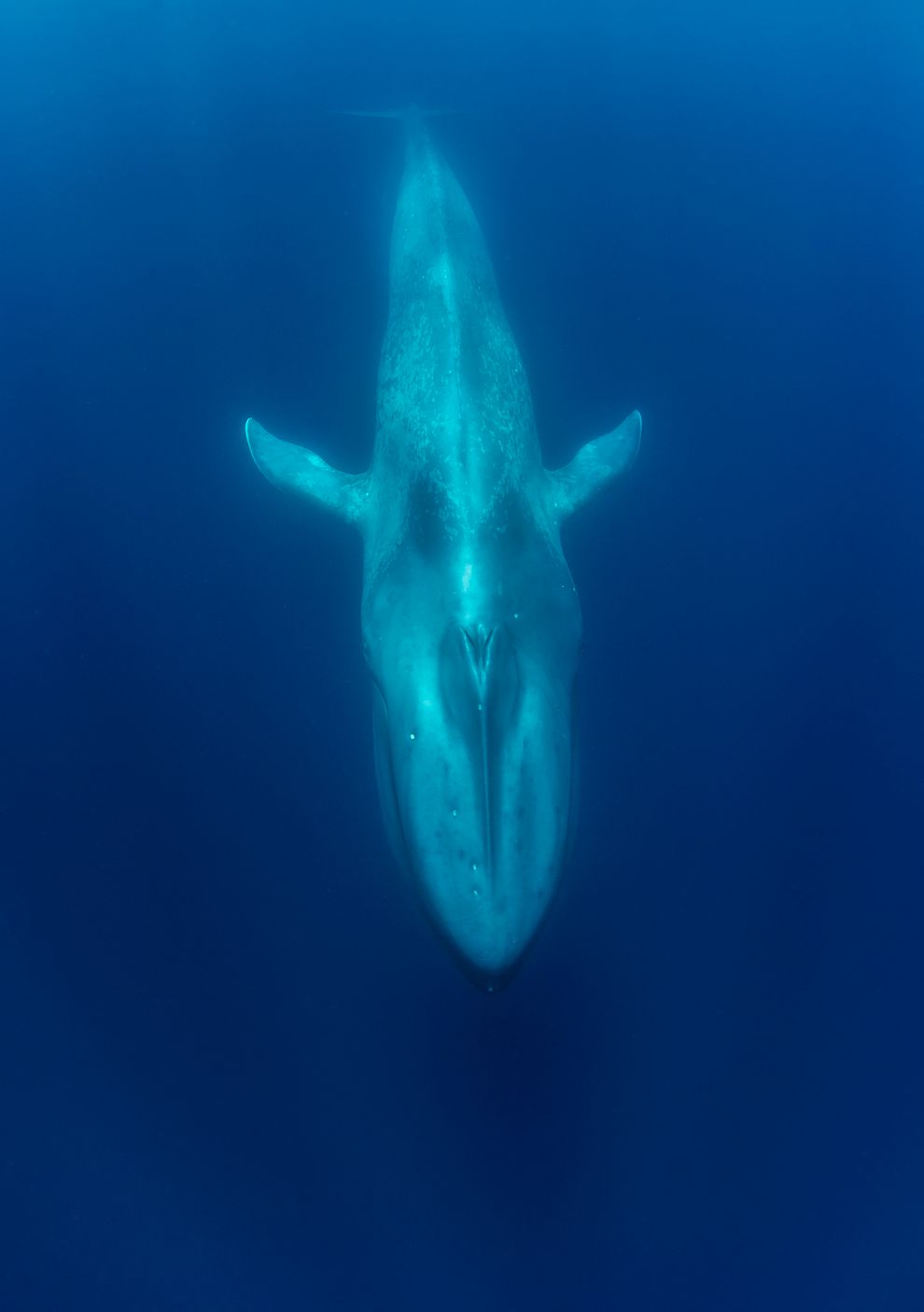蓝鲸在潜水觅食时,心脏每分钟只跳动两次
蓝鲸在潜水觅食时,心脏每分钟只跳动两次
Blue whales are the largest animals that have ever lived on Earth. They can stretch up to 100 feet (30 meters) long and weigh 300,000 pounds (136 metric tons), roughly four times the length and 20 times the weight of an African elephant. They also have the biggest hearts in the animal kingdom — about the size of a bumper car, and weighing some 400 pounds (180 kilograms).
蓝鲸是地球上曾经生活过的最大的动物。它们可以长到100英尺(30米),重达30万磅(136吨),大约是非洲象的4倍长,20倍重。它们的心脏在动物王国里也是最大的——大约一辆碰碰车那么大,重约400磅(180公斤)。

Photo: wildestanimal/Shutterstock
Until now, no one had managed to record the heart rate of a blue whale. That's understandable, given the logistical difficulties of measuring such a huge animal's pulse while it swims in the open ocean. Thanks to a team of U.S. researchers, though, we not only have the first recording of a blue whale's heart rate, but we also get to see how it changes as the whale dives to feed, going as deep as 600 feet (180 meters) for as long as 16 minutes at a time.
到目前为止,还没有人能够记录到蓝鲸的心率。这是可以理解的,考虑到在开放的海洋中测量这么大的动物的脉搏的后勤困难。不过,多亏了美国的一组研究人员,我们不仅首次记录了蓝鲸的心率,而且我们还可以看到它是如何变化的,因为鲸鱼潜水觅食,深度高达600。英尺(180米)长达16分钟。
Led by Jeremy Goldbogen, assistant professor of biology at Stanford University, the team used a specialized tracking device equipped with electrodes and other sensors, which they attached via suction cups to a wild blue whale in Monterey Bay, California. Their findings were published Nov. 25 in the Proceedings of the National Academy of Sciences.
在斯坦福大学生物学助理教授杰里米·戈德伯根的带领下,研究小组使用了一种配备了电极和其他传感器的专门追踪装置,通过吸盘将它们附着在加利福尼亚州蒙特利湾的一头野生蓝鲸身上。他们的发现发表在11月25日的《美国国家科学院院刊》上。
"The largest animals of all time, of course, can't be in the laboratory in a building," Goldbogen says in a video about the new study. "So we are bringing the biomechanics lab into the open ocean using these suction-cup attach tags."
“有史以来最大的动物当然不可能在实验室里,”Goldbogen在一段关于这项新研究的视频中说。“因此,我们将利用吸盘附加标签把生物力学实验室引入海洋。”
The data show how a blue whale's heart helps it perform its deep feeding dives, the researchers report, and they also suggest this enormous organ is operating near its limits. This could help explain why no animal has evolved to grow larger than a blue whale, since the energy needs of a larger body might surpass what's biologically possible for a heart to accommodate.
研究人员报告说,这些数据显示了蓝鲸的心脏是如何帮助它进行深食潜水的,他们还指出,这个巨大的器官正在接近它的极限。这可能有助于解释为什么没有动物进化到比蓝鲸更大,因为一个更大的身体所需要的能量可能超过心脏所能容纳的限度。
When the whale dove to feed, its heart rate slowed to an average of about four to five beats per minute, the researchers found, with a low of two beats per minute. It rose as the whale lunged for prey at the deepest point of its dive, increasing by about 2.5 times the minimum rate, then slowly fell again. A final surge occurred as the whale returned to catch its breath at the surface, where the highest heart rates of 25 to 37 beats per minute were recorded.
研究人员发现,当鲸鱼俯冲进食时,它的心率会减慢到平均每分钟4到5次,最低为每分钟2次。当鲸鱼俯冲至最深处扑向猎物时,它的速度上升,大约是最低速度的2.5倍,然后再次缓慢下降。最后一次高潮出现在鲸鱼返回海面呼吸的时候,那里记录的最高心率为每分钟25到37次。
As the planet's largest animal, blue whales have a lot to teach us about biomechanics in general. But they're also listed as Endangered by the International Union for Conservation of Nature, and since their gigantic bodies are so dependent on a large, consistent food supply, insights like this could be particularly valuable for protecting the species.
作为地球上最大的动物,蓝鲸可以教给我们很多生物力学知识。但它们也被国际自然保护联盟列为濒危物种,由于它们庞大的身体依赖于大量稳定的食物供应,这样的发现对保护物种可能特别有价值。
"Animals that are operating at physiological extremes can help us understand biological limits to size," Goldbogen says in a press release. "They may also be particularly susceptible to changes in their environment that could affect their food supply. Therefore, these studies may have important implications for the conservation and management of endangered species like blue whales."
Goldbogen在一份新闻稿中说:“在生理极限下活动的动物可以帮助我们理解体型的生物学极限。”“他们也可能特别容易受到环境变化的影响,这可能会影响他们的食物供应。因此,这些研究对保护和管理蓝鲸等濒危物种可能具有重要意义。”
The researchers plan to add more features to their suction-cup tag for future studies, including an accelerometer to shed more light on how heart rate changes during various activities. They also hope to use the tag with humpbacks and other whales.
研究人员计划在吸盘标签上添加更多的功能,以用于未来的研究,其中包括一个加速计,以便更清楚地了解心率在各种活动中是如何变化的。他们还希望把这个标签用在座头鲸和其他鲸鱼身上。
"A lot of what we do involves new technology and a lot of it relies on new ideas, new methods and new approaches," says co-author and Stanford research assistant David Cade, who placed the tag on the whale. "We're always looking to push the boundaries of how we can learn about these animals."
“我们所做的很多事情都涉及到新技术,其中很多都依赖于新思想、新途径和新方法,”合著者、斯坦福大学研究助理大卫·凯德说。“我们一直在努力突破我们了解这些动物的极限。”
- 频道推荐
- |
- 全站推荐
- 推荐下载
- 网站推荐


















